Redirecting pages on any website is a crucial part of the user experience on your online platform. From the perspective of Search Engine Optimisation too, Redirects play a major role in enhancing the user experience and maintain the brand authority.
One may face a question here that,
Why does a redirect mean?
Redirects are the processes that direct the user from one URL to another. It works for both the search engines and users to get to the other URL as a jump from one platform to another.
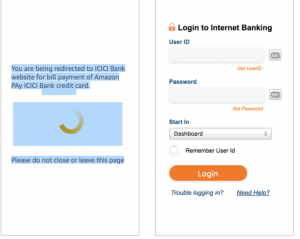
These pages make sure that the visitor who came to your website does not get lost or never reach a dead end on the same.
In general, cases like if a business has changed its domain, deleted a page, moved to a new location, or other, redirects are used to show a way to the visitor where they can find what they came looking for.
The most commonly used for redirects are 301 and 302. These redirects may look simple to understand but are very complex and require the utmost knowledge to master them.
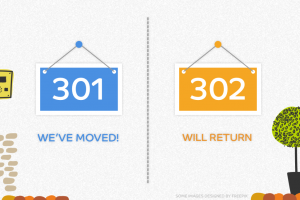
Due to various dos and dont’s, this topic remains a confusing chapter for both the search engines and the webmasters.
Be it any SEO agency professional or a person from a non-technical background, the following guide about the 301 and 302 redirects will help you clear all the myths and attain the right knowledge on the same.
What is a 301 redirect?
It is a permanent redirect that takes the user to the new redirected page when the original page no longer exists or is relocated permanently. The ranking power or entire link equity is shifted to the redirected page.
In technical language, 301 is an HTTP status code that is used for this type of redirect. It is the best method you can employ when you are looking for implementing redirects on a website.
Thus, when a page is moved permanently, and you do not want your users to hustle the way, you can implement a 301 redirect on the website.

It eliminates the probability of a dead-end on your website that can seriously harm the user experience.
Your traffic will not get lost, and your brand authenticity will stay up to the mark. The page authority of the domain and PageRank will be maintained.
The traffic from the inbound links of the old page is redirected to the new page.
What is a 302 redirect?
It is a temporary redirect and is utilized when pages are moved temporarily due to some reason. When the testing process, changes session, redesigning, updating or the original page is under maintenance, this type of redirect is used.
Many people also use 302 redirects to check the customer feedback on the new page as it won’t affect the rankings of their old age.
It was stated that utilizing a 302 redirect may cause harm to PageRank, but in 2016 Google’s John Mueller confirmed that 302 redirects do pass PageRank.
One should understand that 301 is a permanent redirect while 302 is a temporary redirect.
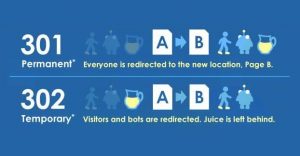
Search Engine Optimisation Guidelines for 301 and 301 redirects
Now that you have understood the difference between 301 and 302 redirects, it is time that we learn how to use these redirects.
Choose 301 redirect over 302
302 redirects can only be used temporarily and often lacks in preserving many qualities of the original website.
In such a case, it would be a wise decision to use 301 redirects that help in preserving the link juice and less impact on the search engine rankings.
Thus, go for 301 redirects over 302 even if your website is under maintenance or is getting updated.
Redirect to the safer version of a website
To a non-technical person, HTTP:// to HTTPS:// may look similar, but technically both have a major difference. The extra ‘s’ in HTTPS:// stands for added security of your website. The ‘s’ stands for SSL certificate. It signifies that your website is safe from external issues like hackers, data intrusion, or others.
It can be attained by availing of an SSL certificate for your website. So when you are planning to redirect any page, make sure that the URL on which the user lands has an SSL certificate in it. It provides the user an added sense of trust towards your brand that their information is safe with you.
No delay in website redirects
In some cases of 301 redirects, it may take 15 to 20 seconds to forward the bots or users to the new page which can lead to a higher bounce rate on your website.
No user would like to wait around for such a long time when they can get the same thing on another website instantly.
Check out the graph given below for an insight on how load speed affects website bounce rate.
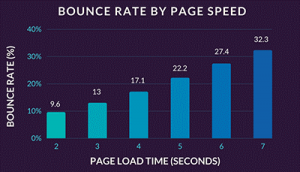
Redirection to relevant pages
It is important to redirect your users to the relevant pages that provide them with what they came looking for on your online platform. If you fail in this practice, you may lose a substantial amount of traffic on your website due to poor user experience.
Make sure that you provide the exact content that you indicate on the relevant URL for redirection.
In SEO practice,
Check out the points where you can put 301 and 302 redirect pages correctly in correspondence with On-page SEO.
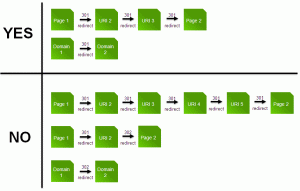
301 redirects are considered to be the best practice even though the difference between the two is fairly minimal.
Although, the Google ranking algorithm considers all the 30x redirects on the same level that is further confirmed by Google itself.
The old page SEO ranking authority is preserved in all cases. In 2016, the Google webmaster trends analysts also announced publicly to businesses and SEO professionals that no PageRank dilution exists while using 301 or 302 redirects.
Thus, you do not have to worry about the SEO services investments you made on your old page as all of its earned achievements will be redirected and preserved for the new page.
Author Bio:
Rajesh Bhimani is the Founder at Skynet Technologies, Website Design and Development Agency. He has 20 years of experience in Technology and Marketing industry. When he isn’t working, you can find him cooking for his family or reading some fiction. You can connect with him on Twitter.
